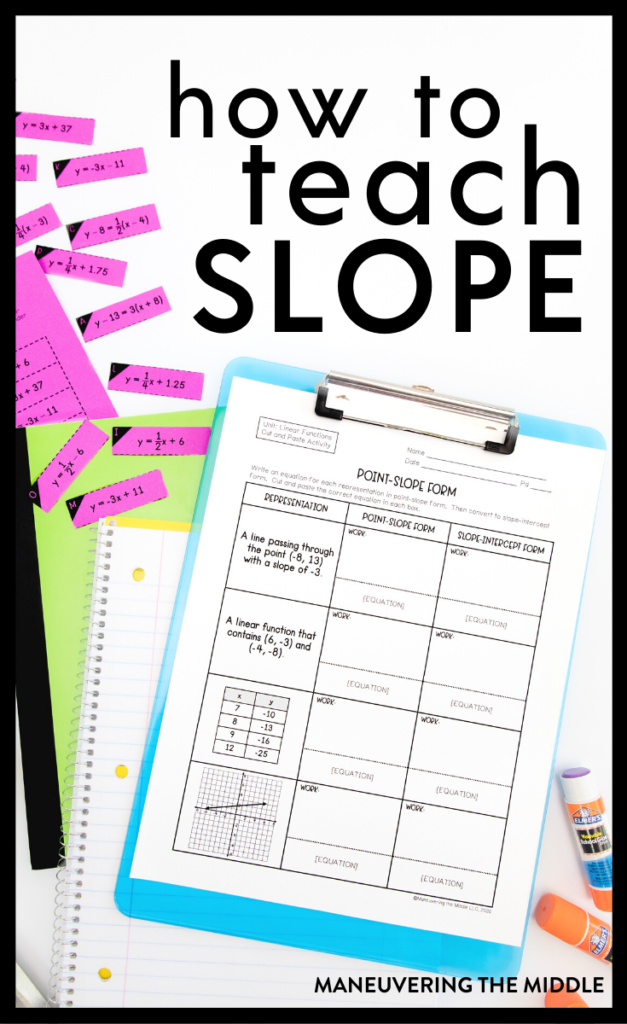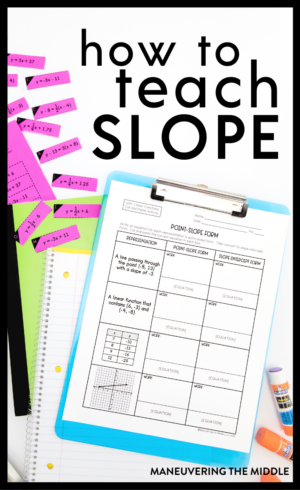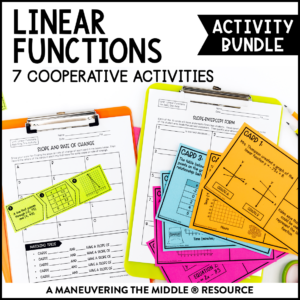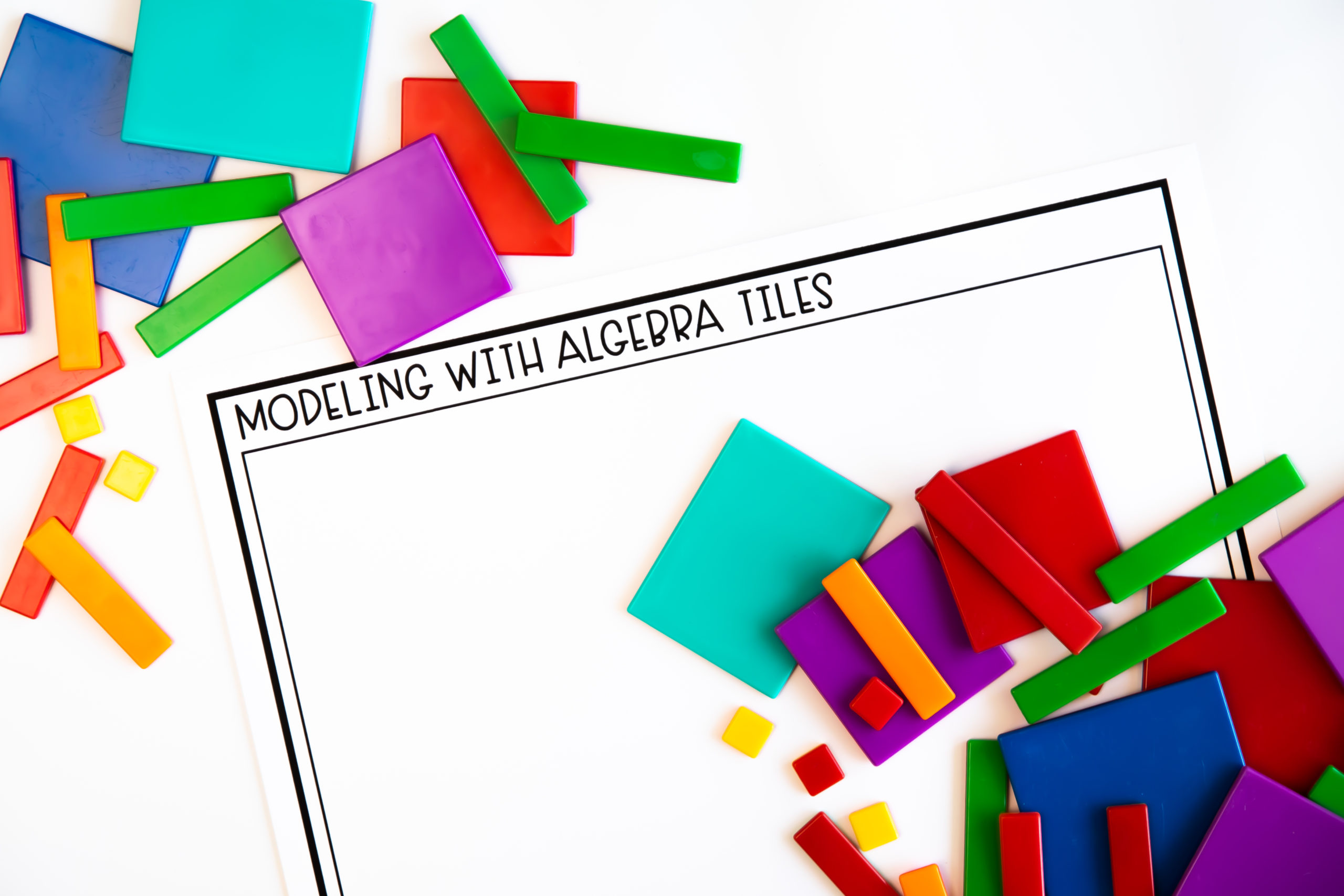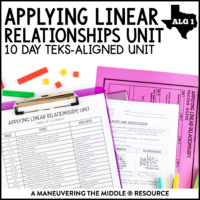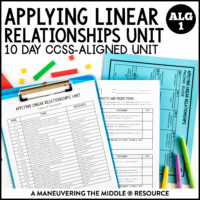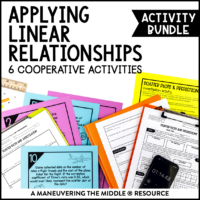Slope is a heavily emphasized standard in high school math, but its origins (like all math really) predate high school by years. In fact, students are already seeing the precursor to slope in 6th grade — rates, unit rates, and graphing an independent and dependent variable on a graph. Today, we are going to explore slope in all of its math glory.
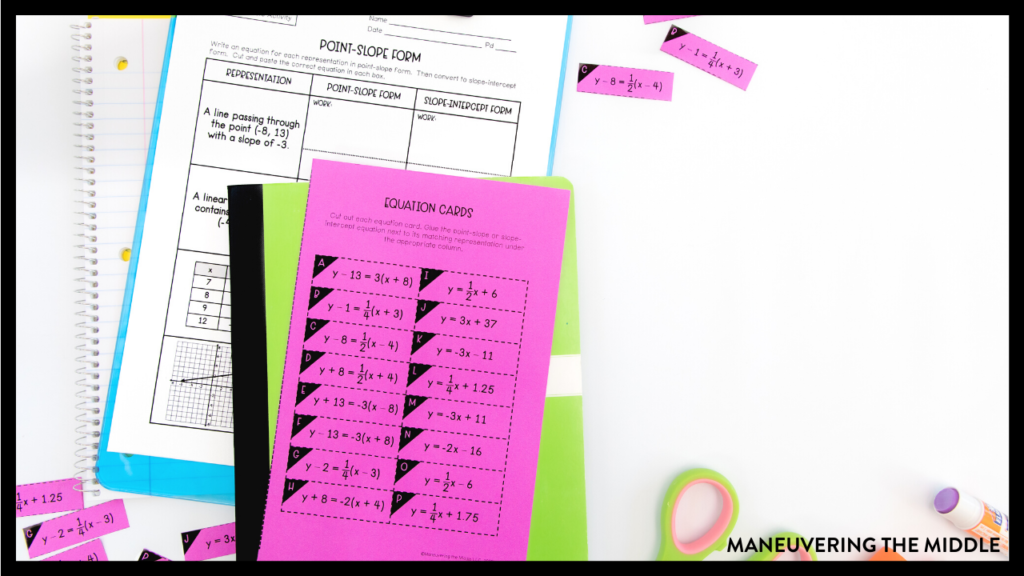
HOW TO TEACH SLOPE
Here are a few TEKS to show you some of the vertical alignment of this skill(s).

 It is always more helpful for me to see a test question than a standard, so I pulled a few questions from the 2019 STAAR to show the progression of slope from middle school to algebra. This is a great method to exercise when thinking about vertical alignment. For today’s purposes, I focused on proportional relationships.
It is always more helpful for me to see a test question than a standard, so I pulled a few questions from the 2019 STAAR to show the progression of slope from middle school to algebra. This is a great method to exercise when thinking about vertical alignment. For today’s purposes, I focused on proportional relationships.
6th GRADE
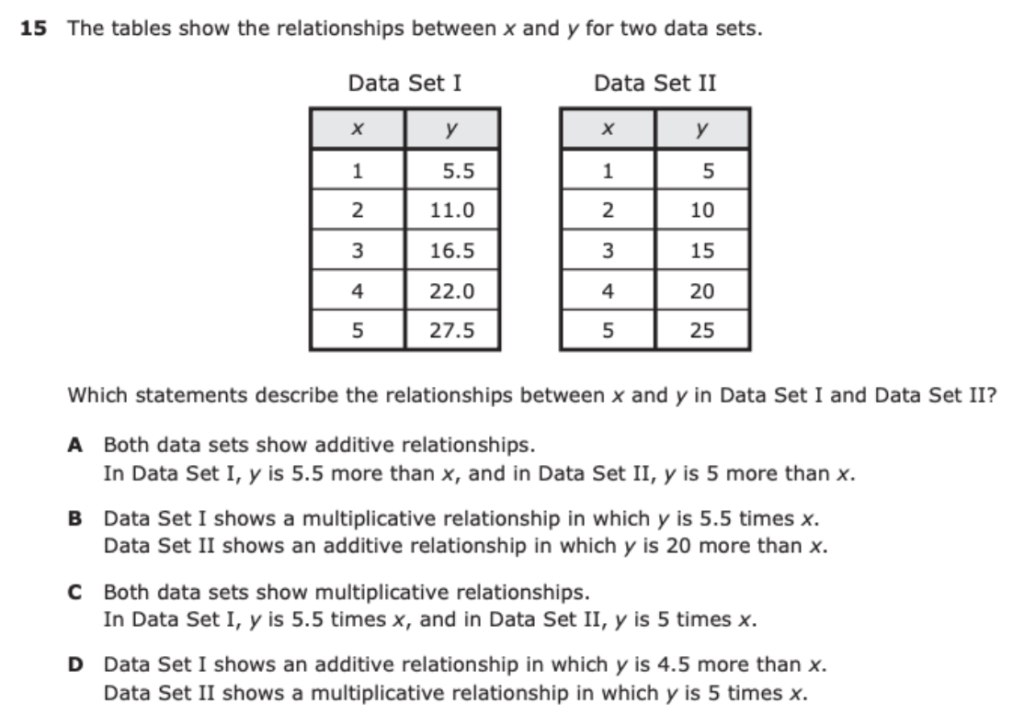
7th GRADE
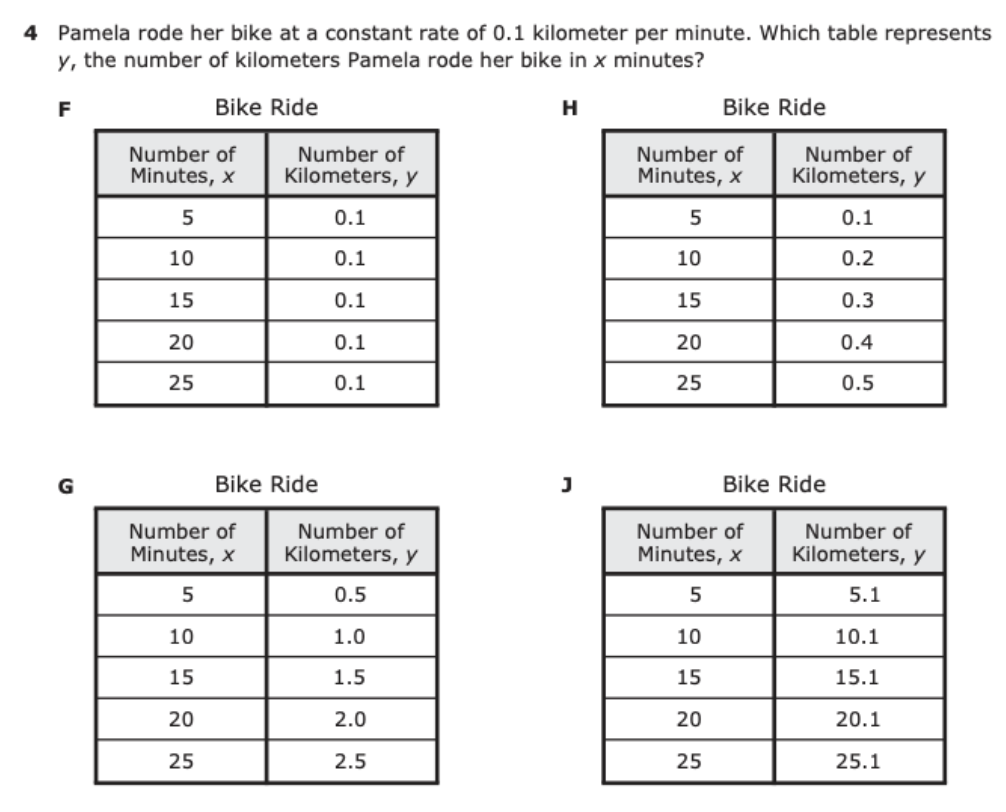
8th GRADE
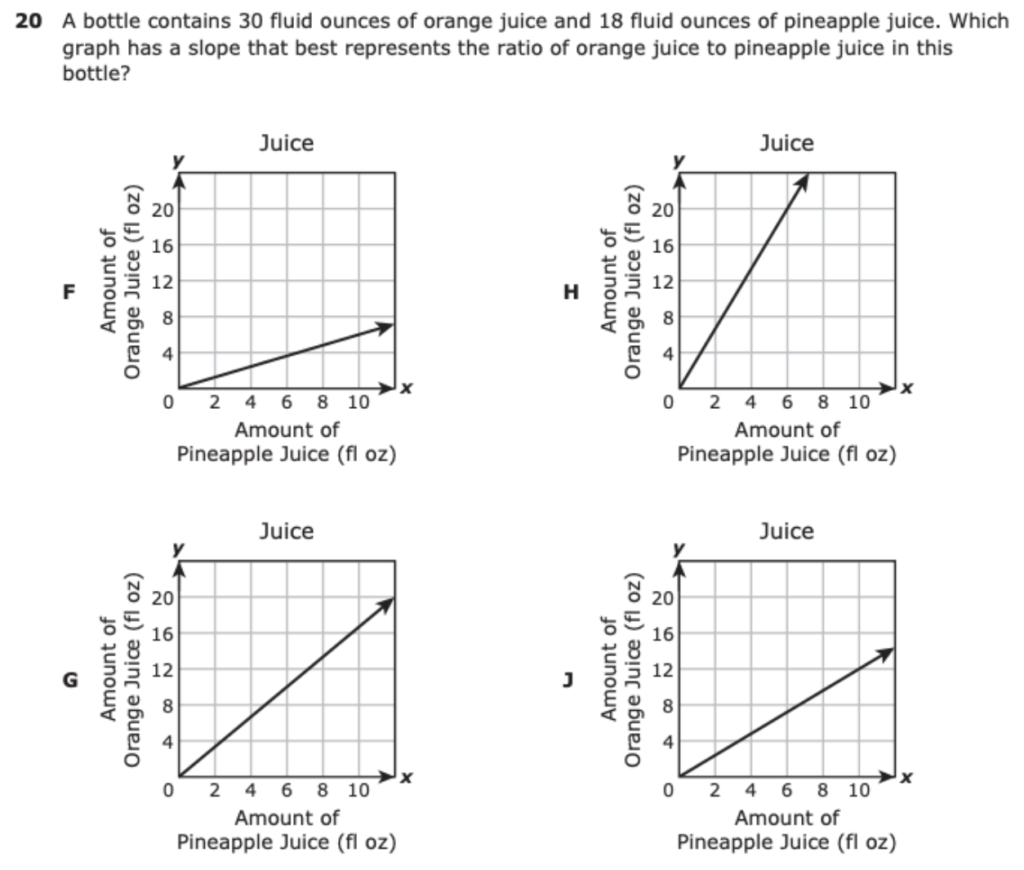 Algebra 1
Algebra 1
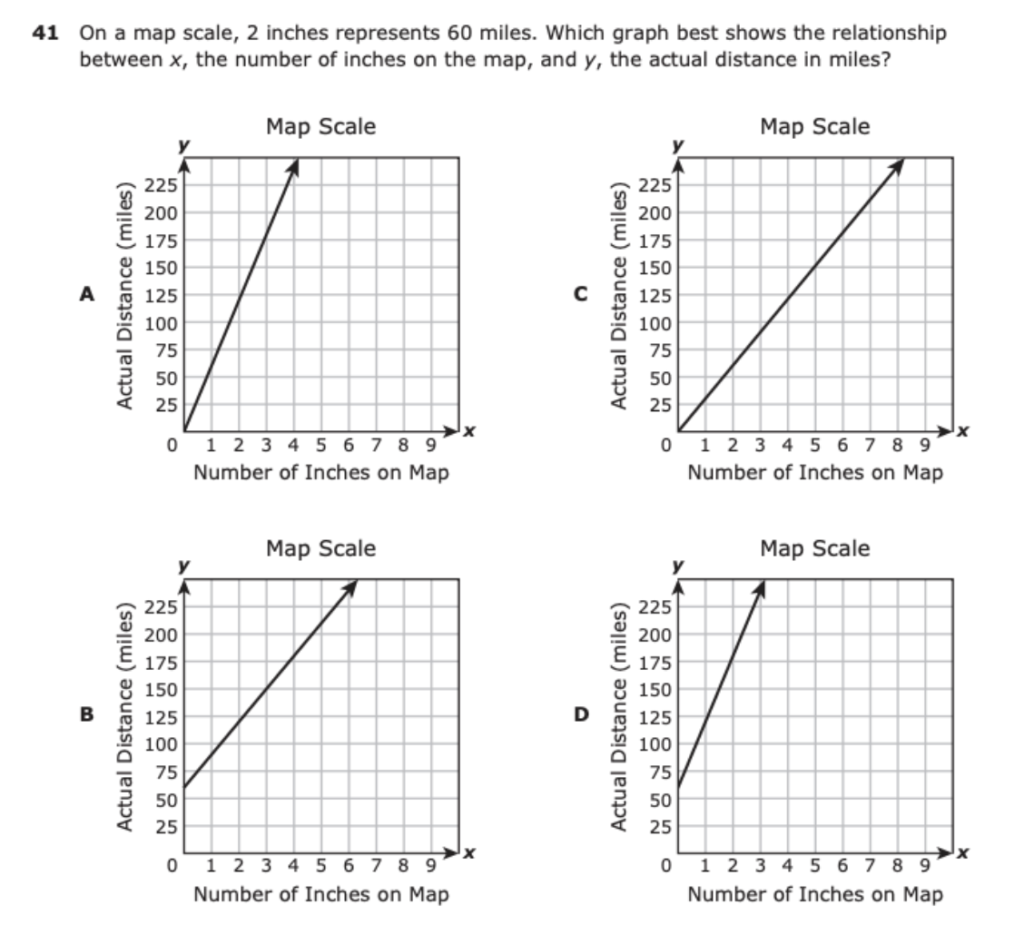
Strategy #1: Vocabulary and Types of Slope are Key
Each grade level will focus on a different vocabulary word according to the standards, but it is important to connect these concepts to what students have already been taught in previous years. Whether it is unit rate, constant of proportionality, slope, or rate of change, it is important to articulate that all of these terms essentially mean the same thing and to remind students that they can and will see these words used interchangeably.
As 7th graders are expected to begin graphing slope using slope intercept form, I found this idea particularly brilliant (from one of the amazing teachers in our Facebook group):
y = mx + b —> b is where you begin (y-intercept) and m is what moves (the slope)
I would also like to add that while I was never shown Slope Dude or Mr. Slope Man, it would have been incredibly helpful to help me remember the difference between an undefined slope and a zero slope. Ms. Gertson, the Algebra teacher at my school, had a huge anchor chart of Mr. Slope Guy in her classroom. 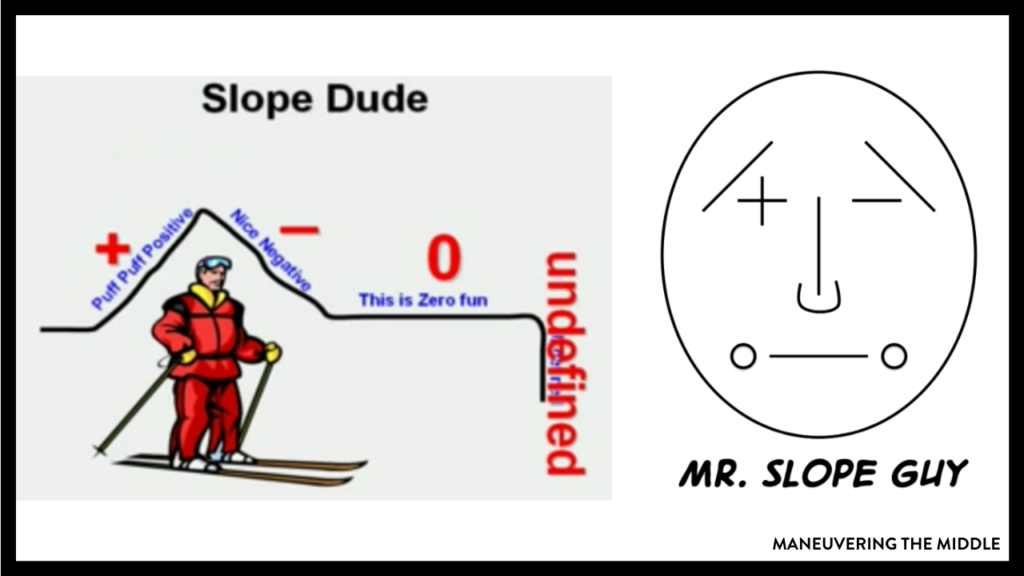
Strategy #2: Scaffold
As teachers, we can look at math concepts through the lens of full understanding and underestimate how challenging it can be for a student who is seeing the concept for the first time.
Identifying the type of slope, calculating slope from two points or a line on the graph, and graphing an equation all require multiple days on your scope and sequence. My recommendation is to:
- Day 1: Start with graphing unit rates as y=mx and introduce the different types of slopes – positive, negative, undefined and zero.
- Day 2: Have students practice finding slope from the graph of the line using rise over run.
- Day 2 or 3: Introduce the slope formula. Have students determine the slope from two points and/or from the graph.
- Day 4: Use real-life applications (like salary + commission or a cell phone plan with a data usage rate + processing fee) to connect to slope-intercept form. A teacher in our Facebook group said she makes the connection to transformations of functions since slope intercept form is a translation of y=mx.
Another teacher said, “I do the same, making sure they understand the relationship between tables, graphs, and equations with unit rates and then extending it with an initial/starting value. (We practice) a lot of word problems and applications before we introduce slope and formulas…. to (improve) conceptual understanding.”
The best part is that we have done this for you – check out our Linear Functions Unit for Algebra 1.
Are you an 8th grade teacher? Grab Linear Relationships Unit for 8th Grade.
Strategy #3 Use Technology for Real-World Application
There is something that helps math click when students can see how manipulating the equation of the graph will impact the actual line of the graph itself in real-time. We love and recommend Desmos all of the time. Here are two activities that are sure to help students make those connections.
Marble Slides: “In this delightful and challenging activity, students will transform lines so that the marbles go through the stars. Students will test their ideas by launching the marbles and will have a chance to revise before trying the next challenge.”
Land the Plane: “In this activity, students practice finding equations of lines in order to land a plane on a runway. Most of the challenges are well-suited to slope-intercept form, but they are easily adapted to other forms of linear equations depending on the goals of an individual class or a student.”
Grab these Winter Solve and Color freebies that include rate of change and slope!

What are some ways you teach slope? Tell us what grade you teach and how you discuss slope with your students.
Looking for more great content? Maneuvering the Middle resources are now for Algebra 1 TEKS. Check it out here.
